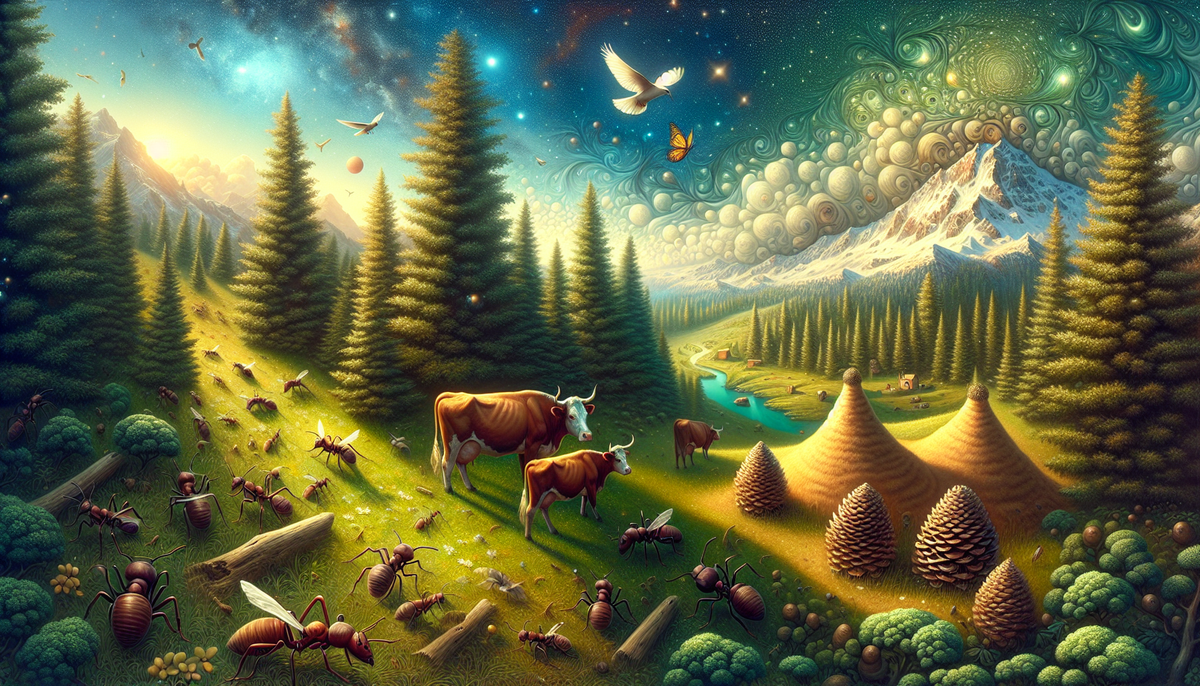How Ancient People Predicted the Weather: No Tech Needed!
Forget your weather app! Ancient people predicted storms using the moon, animals, and even pine cones! Curious how they mastered the skies without tech? Their clever tricks will blow your mind—rain, wind, and even cows had something to say! Ready

How Ancient People Predicted the Weather: No Tech Needed!
Ever wonder how people knew when it was going to rain like, 2,000 years ago? Spoiler: They didn’t have a single weather app. Shocker, right? But somehow, they still knew when big, bad storms were coming. No tech, just nature. Curious how they did it? Wait till you hear this ancient wisdom—they were basically the original weathermen.
How Did They Do It?
Okay, so here’s the deal: before we had satellites, Doppler radar, or even the good ol’ weather channel, ancient people had to rely on their surroundings to predict the weather. And I’m not talking about just looking up at the sky and hoping for the best. They were super observant—like, Sherlock Holmes-level observant. They watched animals, plants, the stars, and even the wind to figure out what was coming.
Imagine depending on the weather for everything—farming, travel, survival. Knowing if a storm was coming could literally be the difference between life and death. So yeah, they got creative. Let’s dive into some of the coolest ways ancient people predicted the weather.
1. Stars and the Moon: The Original Sky App
Did you know some ancient civilizations thought the color and brightness of stars could predict the weather? In ancient Greece, people believed that if the stars twinkled more, it meant rain was on the way. Twinkling stars? Rain. No twinkle? Clear skies. It’s like their version of checking the radar, but way more magical.
And the moon? Oh, they were all about the moon. Some cultures believed the moon’s position could tell them when storms were brewing. While it wasn’t always 100% accurate, they noticed patterns—like how the moon’s phases could affect tides and even seasonal weather shifts. It’s wild to think they were using the sky as their personal weather app!
2. Animal Behavior: Nature’s Little Weathermen
This one’s my favorite. Animals seem to have a sixth sense when it comes to weather, and ancient people were all over that. They noticed that animals acted differently when a storm was coming, and they used those behaviors to predict the weather. Here are some of the coolest examples:
- Birds flying low? That’s a red flag. When birds fly lower than usual, it’s often because of changes in air pressure, which can signal that a storm is on the way. So, if you see birds swooping down, maybe grab an umbrella.
- Cows lying down? Yep, that’s a thing. People believed that when cows lay down in the field, it meant rain was coming. It’s like the cows were saying, “Eh, we’re not feeling this weather. Let’s just chill.”
- Ants building higher mounds? You better believe it. When ants sensed heavy rain or flooding, they’d build their mounds higher to avoid getting washed away. Smart little guys, right?
3. Cloud Gazing: The Ancient Weather Radar
Today, we might look at clouds and think, “Ooh, pretty!” But ancient people? They saw clouds as major weather indicators. In China, for example, they believed that the shape and movement of clouds could predict weather changes.
Here’s a fun fact: big, puffy clouds (cumulus clouds) were seen as a sign of fair weather, while long, streaky clouds (cirrus clouds) were like nature’s way of saying, “Heads up, a storm’s coming in a day or two.” It’s like they were reading the sky like a book!
4. Wind Patterns: The Whispering Winds
In ancient Egypt, the wind was sacred. They believed that the direction and speed of the wind could tell them how long a drought would last or when the rains would come. They tracked wind patterns like we track stocks today—except, you know, way more life-or-death.
If the wind was blowing from a certain direction, it could mean the Nile River would flood soon, which was crucial for their crops. They didn’t have weather apps, but they had the wind, and that was enough.
5. Plants and Trees: Nature’s Little Weather Detectors
Okay, this one’s super cool. Some plants are like little weather detectives. Ever heard of pine cones closing up before it rains? Yep, that’s a thing. Pine cones close up tight when they sense moisture in the air, which is a pretty solid indicator that rain is on the way. It’s like nature’s version of a weather radar.
And it wasn’t just pine cones. Some indigenous tribes noticed that when trees were extra sticky with sap, it usually meant rain was coming. Even plants were in on the weather-predicting game!
Why Does This Matter Today?
So, why should we care about these old-school weather hacks today? Well, for one, it’s a reminder of how connected humans used to be to nature. We’ve got all this fancy tech now, but back then, people were paying attention to the world around them in ways we’ve kinda forgotten.
And with climate change making weather patterns more unpredictable, maybe it’s time we start paying attention to nature’s little hints again. I mean, how many times have you been caught in a surprise rainstorm because you forgot to check the forecast? Maybe next time, instead of relying on an app, you could just look at the sky, watch the birds, or—dare I say it—check out some pine cones.
Next Time You See a Cloud…
So, next time your dog starts acting weird or you see clouds piling up on the horizon, just remember: You might be tapping into the same ancient weather-detecting skills that people used thousands of years ago. Who needs an app when the sky is basically talking to you?
And hey, if you thought predicting the weather was impressive, wait till you hear how ancient people built the pyramids without cranes. Stay tuned, we’re diving into that next!
Boom! There you have it—ancient weather prediction, no tech required. Pretty mind-blowing, right? Now, go impress your friends with your newfound knowledge about cows, pine cones, and twinkling stars. 🌦️



